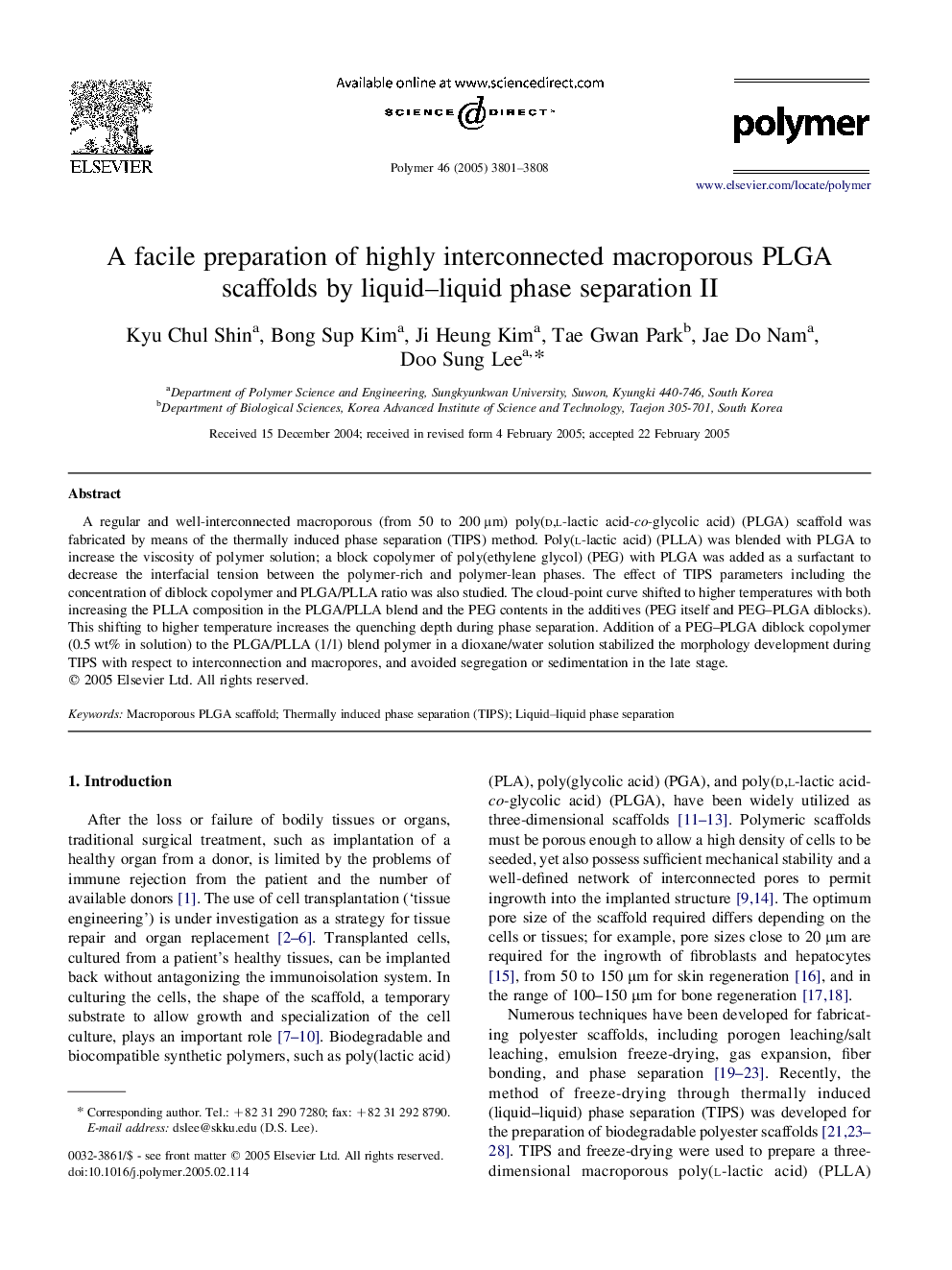| Article ID | Journal | Published Year | Pages | File Type |
|---|---|---|---|---|
| 5191334 | Polymer | 2005 | 8 Pages |
Abstract
A regular and well-interconnected macroporous (from 50 to 200 μm) poly(d,l-lactic acid-co-glycolic acid) (PLGA) scaffold was fabricated by means of the thermally induced phase separation (TIPS) method. Poly(l-lactic acid) (PLLA) was blended with PLGA to increase the viscosity of polymer solution; a block copolymer of poly(ethylene glycol) (PEG) with PLGA was added as a surfactant to decrease the interfacial tension between the polymer-rich and polymer-lean phases. The effect of TIPS parameters including the concentration of diblock copolymer and PLGA/PLLA ratio was also studied. The cloud-point curve shifted to higher temperatures with both increasing the PLLA composition in the PLGA/PLLA blend and the PEG contents in the additives (PEG itself and PEG-PLGA diblocks). This shifting to higher temperature increases the quenching depth during phase separation. Addition of a PEG-PLGA diblock copolymer (0.5 wt% in solution) to the PLGA/PLLA (1/1) blend polymer in a dioxane/water solution stabilized the morphology development during TIPS with respect to interconnection and macropores, and avoided segregation or sedimentation in the late stage.
Related Topics
Physical Sciences and Engineering
Chemistry
Organic Chemistry
Authors
Kyu Chul Shin, Bong Sup Kim, Ji Heung Kim, Tae Gwan Park, Jae Do Nam, Doo Sung Lee,
